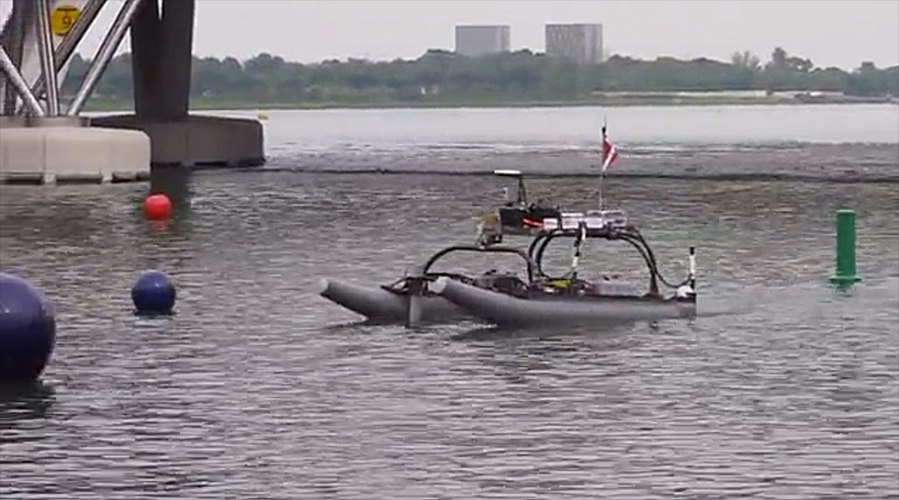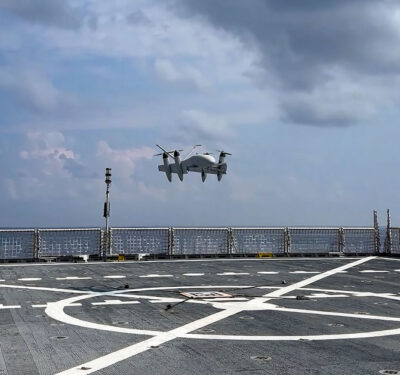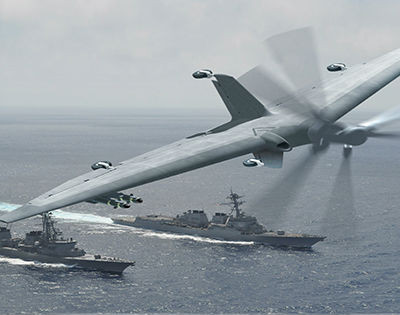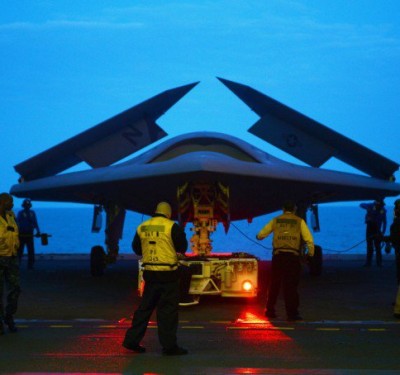
The first place team Athena-Nike vessel from M.I.T./Olin
Unmanned boats from the Massachusetts Institute of Technology and Olin College recently took first place in the inaugural AUVSI Maritime RobotX Challenge—and they did it with the help of Velodyne’s HDL-32E 3D LiDAR sensor.
Known as team Athena-Nike, the joint partnership between M.I.T. and Olin College took first place overall, second place in land-based judging, and first place in the best paper category, according to a news release.
A total of 15 teams from five countries (Singapore, Australia, Japan, South Korea and the U.S.) competed in the event, which was held from Oct. 20-26 at The Float in Singapore’s Marina Bay. The teams were tasked with outfitting an unmanned surface vehicle with sensors, computers and software. They then had to guide their vehicles along a course based on various maritime missions, according to the release.
As they made their way through the course, each team’s vessel had to complete a variety of tasks, including avoidance and detection of obstacles, identifying and reporting on a specified target and searching underwater for an acoustic source.
Competitors from the Embry-Riddle Aeronautical University’s Team Minion, who also equipped their vessel with the LiDAR sensor, took fourth place. Team Minion took first place overall at the 7th Annual International RoboBoat Competition held July 13 in Virginia Beach, Virginia.
“We’re honored to acknowledge Velodyne LiDAR’s gracious contribution of the HDL-32E sensor that helped with our fourth place overall finish,” said Hitesh V. Patel, Research Associate at Embry-Riddle, according to the release. “The HDL-32E sensor is an impressive system that has proven to be extremely rugged and reliable through several hundred hours of testing in the harsh maritime environments. Its small packaging, dense scanning and reliable readings made it an ideal choice for our RobotX Maritime platform. As a result of the reliable data, Team Minion was one of the only teams to consistently navigate the obstacle course and set the record for speed through the entry/exit gates.”
The National University of Singapore Faculty of Engineering, the Science Center Singapore and AUVSI organized the event.






